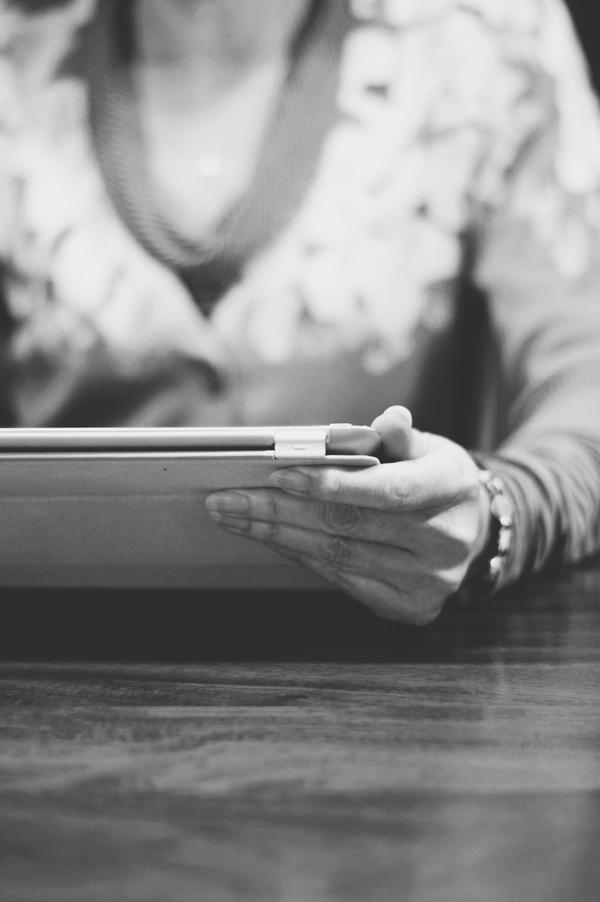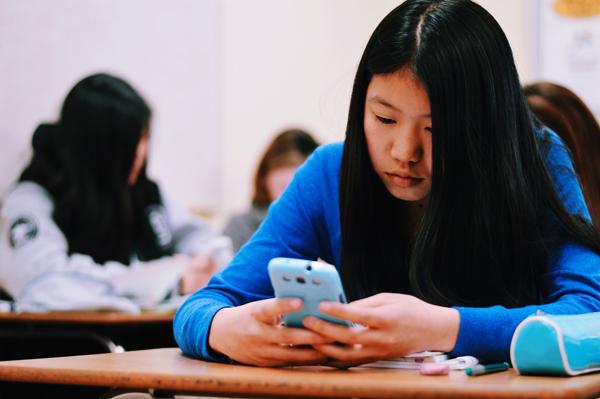Here in the heart of Silicon Valley, we are inundated with technology. We are the daughters, sons, nieces, nephews, cousins, granddaughters, grandsons and who knows what else of employees in STEM fields at tech giants such as Facebook, Apple, Google, and Hewlett-Packard. In our community, technology is a way of life.

Things are no different at the educational level here in the Palo Alto Unified School District. In the past few years there has been a noticeable push for the implementation of more technology in our education system. According its mission statement, PAUSD is “dedicated to preparing youth for the challenges of living in a fast-changing world.” This “fast-changing world” refers to the technological revolution making its way into the classroom.
While this philosophy could result in innovative reform in the classroom and more efficient methods of teaching, PAUSD, which embraces the technologically dependent philosophy, has not yet effectively integrated technology into our education. Though the sentiment of the goal is exciting, our iPad carts are hindering the classroom dynamic rather than enhancing it.
Students already spend a significant portion of time outside of school hours interacting with technology, whether they are using their phones and computers or watching television. This “fast-changing world” of technological symbiosis in schools might appear revolutionary to teachers. However, it feels natural for the ‘90s generation. The lives of students at Paly are already overwhelmed with technology. School hours are the perfect time for them to unplug their devices and interact with real live people.
One of the best examples of unnecessary technology is the iPads.
“It seems like we could use them a lot more and to a lot better benefit, but they always seem to have so many technical difficulties that I find myself trying to avoid using them,” Paly History teacher Alexander Davis says.
Teachers regularly encounter technical difficulties with Paly’s iPad carts. This results in them being used only once or twice a month, which significantly lowers their cost-effectiveness.
Informing teachers how to use technology is a key step in successfully integrating it into our education system. Teachers do have the option to take classes at the district office to learn how to use new technology that PAUSD acquires.

The district’s efforts to guide teachers while they learn to use new technology is a promising step towards more effective integration of technology in our education system, and shows that we are on the right track.
Old school
The Waldorf School of the Peninsula, whose private high school campus is located in Mountain View, has a much different philosophy about technology than PAUSD. According to an article published by The New York Times in October of 2011, the Waldorf School does not allow its students to have any exposure to technology in the classroom until the eighth grade. Even the use of technology at home is discouraged. Students learn by engaging in creative activities such as art, drama, and music so as to strengthen their imaginations and capacities for thinking.
While one of PAUSD’s main goals seems to be teaching students how to keep up with the latest technology, the Waldorf School is more focused on embracing the uniqueness of each student and teaching them how to interact with others.
Pippa Le Cesne Byrne, a former Paly student who transferred from Paly to the Waldorf School mid-way through last year, believes her school’s limited use of technology and emphasis on the arts has impacted her education in a positive way.
“It might seem that Waldorf is lacking something by not having the same technology, but that is not true at all,” Le Cesne Byrne says. “Waldorf has other ways of teaching that, in my opinion, are a lot more effective.”
The right approach
Vera Michalchik, Senior Associate Director for learning sciences and technology at the Center for Teaching and Learning at Stanford University, and former Director of Research on informal learning environments at SRI International, believes that technology can be successfully integrated into the classroom environment if it is used well.
“[Technology] is really more about connecting people to ideas, resources, and other people,” Michalchik says. “A lot of people think that just having technology means all problems are solved, and that’s not true. I think putting too much faith in just the fact of technology is not the right approach.”
It would be beneficial to the learning environment at Paly if PAUSD used its wired classrooms in a different way. Rather than relying on iPads and apps to deliver content to students, technology should be used to help link students to resources that will allow them to explore topics in more depth. A good example of this is using technology for research instead of content delivery.
Another good use for technology could be the use of digital platforms and databases to connect students to more resources and information. A sort of educational Pinterest, so to speak. Students could communicate with one another and explore what they are learning in more depth. A bad use of technology would be having a teacher rely on an app to teach a lesson to a class rather than teaching them the old-fashioned way: verbally.
New methods of integrating technology in the classroom will help students strike a balance between living in our rapidly changing world while still remembering the value of human connections and individuality.



